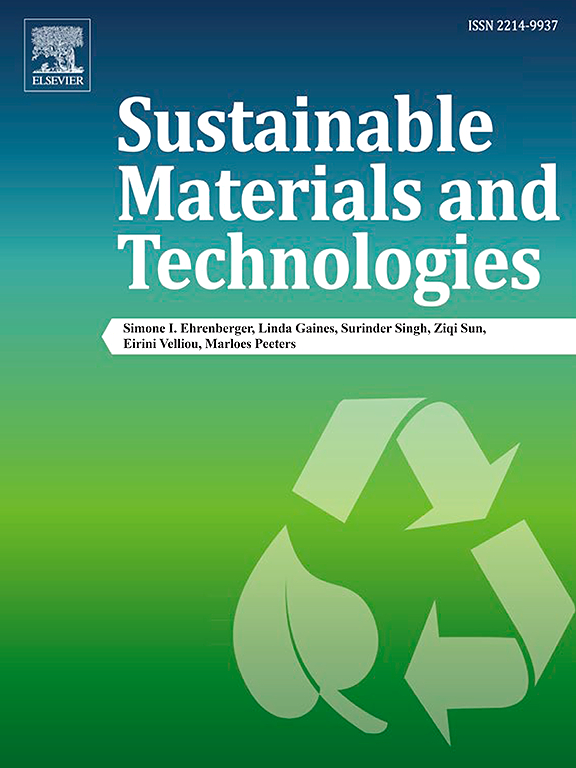Revolutionizing nitrogen and carbon dioxide fixation through advanced electrocatalytic strategies
IF 8.6
2区 工程技术
Q1 ENERGY & FUELS
引用次数: 0
Abstract
Rising greenhouse gas emissions, particularly CO2 and N2O from industrial and agricultural activities, have disrupted natural cycles. They have intensified global warming and extreme weather conditions as emphasized by the 2015 Paris Climate Conference. Electrocatalytic reduction of N2 and CO2 offers a sustainable solution by converting these gases into valuable products using renewable energy. This review provides a unique integration of both topics and conducts a statistical analysis of catalysts reported since 2024. It concentrates on advancements in achieving higher yields, improved efficiency, and enhanced stability. Moreover, the underlying mechanisms facilitating these transformations are detailed. It underscores the significance of the incorporation of metal oxides to a composite catalyst fabrication, which introduces oxygen vacancies or oxygen bonds, thereby improving the adsorption and activation of N2 and CO2 molecules. Additionally, the study classifies various metal oxide-based composites, demonstrating their high stability and Faradaic efficiency. This review presents a new perspective to establish the potential of electrocatalytic reduction in achieving artificial nitrogen fixation and artificial carbon fixation, which align with sustainable environmental practices such as carbon capture and utilization (CCU). Furthermore, it offers insights into the development of innovative electrocatalysts, addressing challenges and exploring opportunities for industrial applications.

革命性的氮和二氧化碳固定通过先进的电催化策略
不断增加的温室气体排放,特别是工业和农业活动产生的二氧化碳和一氧化二氮,破坏了自然循环。正如2015年巴黎气候大会所强调的那样,它们加剧了全球变暖和极端天气条件。电催化还原氮气和二氧化碳提供了一个可持续的解决方案,通过使用可再生能源将这些气体转化为有价值的产品。本综述对这两个主题进行了独特的整合,并对2024年以来报道的催化剂进行了统计分析。它专注于实现更高产量、提高效率和增强稳定性方面的进步。此外,还详细介绍了促进这些转换的底层机制。它强调了金属氧化物在复合催化剂制造中的重要性,它引入了氧空位或氧键,从而改善了N2和CO2分子的吸附和活化。此外,该研究还对各种金属氧化物基复合材料进行了分类,证明了它们的高稳定性和法拉第效率。本文综述了电催化还原在实现人工固氮和人工固碳方面的潜力,这与碳捕获和利用(CCU)等可持续环境实践相一致。此外,它还为创新电催化剂的发展提供了见解,解决了工业应用中的挑战和探索机会。
本文章由计算机程序翻译,如有差异,请以英文原文为准。
求助全文
约1分钟内获得全文
求助全文
来源期刊

Sustainable Materials and Technologies
Energy-Renewable Energy, Sustainability and the Environment
CiteScore
13.40
自引率
4.20%
发文量
158
审稿时长
45 days
期刊介绍:
Sustainable Materials and Technologies (SM&T), an international, cross-disciplinary, fully open access journal published by Elsevier, focuses on original full-length research articles and reviews. It covers applied or fundamental science of nano-, micro-, meso-, and macro-scale aspects of materials and technologies for sustainable development. SM&T gives special attention to contributions that bridge the knowledge gap between materials and system designs.
 求助内容:
求助内容: 应助结果提醒方式:
应助结果提醒方式:


